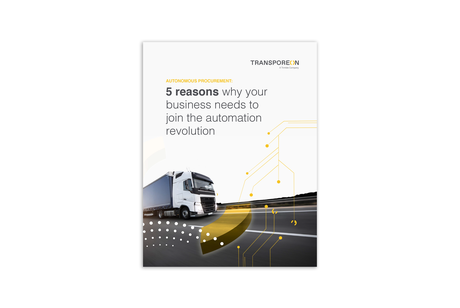The spot market has always been a challenging place. Supply chain disruptions, market fragmentation, and pricing uncertainty all contribute to a complex, fluctuating marketplace dominated by manual effort and time-consuming procurement processes.
But now there is a better way. Thanks to advances in AI and automation, it is possible to optimise freight procurement from beginning to end, lowering transaction costs while speeding up the process for both shippers and carriers.
Dive in to discover the five reasons why your business needs Autonomous Procurement, and learn how to painlessly lower transaction costs by up to 12%, deploy faster processes and enjoy clearer communication with partners.






